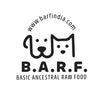Introduction:
Cats are beloved companions cherished for their independence, charm, and unique personalities. As responsible pet owners, ensuring their health and well-being is paramount. One significant aspect of feline care is nutrition, and in recent years, many cat owners have turned to raw feeding as a means to provide their furry friends with a diet closer to what nature intended. Raw cat food offers numerous benefits, including improved digestion, healthier skin and coat, and increased energy levels. However, crafting a balanced and nutritious raw diet requires careful consideration of the ingredients used. In this guide, we'll delve into the essentials of selecting the right ingredients for raw cat food to help you nourish your feline friend optimally.
Understanding Feline Nutritional Needs:
Before delving into ingredient selection, it's crucial to understand the nutritional requirements of cats. Cats are obligate carnivores, meaning they require a diet primarily composed of animal-based proteins to thrive. Their nutritional needs include essential amino acids, such as taurine and arginine, which are vital for maintaining overall health. Additionally, cats need a balanced ratio of vitamins, minerals, and fatty acids for optimal functioning.
- Quality Proteins:
Protein is the cornerstone of a cat's diet, providing the essential building blocks for muscle development, immune function, and overall vitality. When selecting proteins for raw cat food, prioritize high-quality sources such as:
-
Muscle meat: Choose lean cuts of meat like chicken, turkey, beef, or venison. These meats are rich in protein and provide essential amino acids necessary for feline health.
-
Organ meats: Incorporate organ meats such as liver, kidney, and heart into your cat's diet. Organ meats are nutrient-dense, offering vitamins A, D, E, and K, as well as essential minerals like iron and zinc.
-
Fish: While fish can be a valuable source of omega-3 fatty acids, it should be fed in moderation due to potential mercury contamination and thiamine deficiency. Opt for small, oily fish like sardines or mackerel as occasional treats rather than primary protein sources.
- Bone Content:
In addition to protein, raw cat food should contain bone to provide calcium and phosphorus, essential minerals for bone health and overall well-being. Ground bone or bone meal can be added to homemade raw diets to ensure adequate mineral balance. When incorporating bones, it's crucial to grind them finely to prevent choking or intestinal blockages.
- Essential Fatty Acids:
Fats play a crucial role in a cat's diet, providing energy, supporting skin and coat health, and aiding in nutrient absorption. Ensure your cat's raw diet includes sources of essential fatty acids, particularly omega-3 and omega-6 fatty acids. Good sources of omega-3s include fish oil, salmon, and flaxseed oil, while omega-6s can be found in poultry fat and certain plant oils like safflower or sunflower oil.
- Vitamins and Minerals:
While raw meat provides many essential nutrients, additional supplementation may be necessary to ensure your cat's diet is complete and balanced. Vitamin and mineral supplements can help fill in any nutritional gaps and support overall feline health. However, it's essential to consult with a veterinarian or feline nutritionist to determine the appropriate dosage and supplementation regimen for your cat's specific needs.
- Avoiding Harmful Ingredients:
When crafting raw cat food, it's equally important to know what ingredients to avoid. Certain foods can be toxic to cats or may cause digestive upset. Avoid the following ingredients in your cat's raw diet:
-
Onions and garlic: These foods contain compounds that can cause damage to a cat's red blood cells and lead to anemia.
-
Grapes and raisins: Even small amounts of grapes or raisins can cause kidney failure in cats.
-
Chocolate: Chocolate contains theobromine, which is toxic to cats and can cause symptoms ranging from vomiting and diarrhea to seizures and death.
-
Xylitol: This sugar substitute is toxic to cats and can cause a rapid release of insulin, leading to hypoglycemia and liver failure.
- Variety and Balance:
Variety is key when it comes to crafting a balanced raw diet for your cat. Aim to rotate protein sources regularly to provide a diverse array of nutrients and prevent nutrient deficiencies. Additionally, ensure that your cat's diet is balanced over time, incorporating a mix of muscle meat, organ meat, bone, and supplements to meet all of their nutritional needs.
Conclusion:
Choosing the right ingredients for raw cat food is essential for providing your feline friend with a balanced and nutritious diet. By prioritizing quality proteins, incorporating essential fatty acids, vitamins, and minerals, and avoiding harmful ingredients, you can ensure that your cat receives the nutrients they need to thrive. Remember to consult with a veterinarian or feline nutritionist when formulating your cat's raw diet to tailor it to their specific health needs and preferences. With careful ingredient selection and proper planning, you can nourish your cat from the inside out, promoting optimal health and well-being for years to come.

